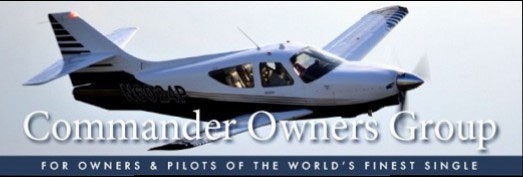Reviewing this thread, I felt the need to emphasize a couple of points:
First, there is no need to reduce the power after take-off. I saw 25 square mentioned and yes, I know that the POH does suggest 26 square for a “Cruise climb.” But that is not a limitation. The manual also indicates full throttle and 2700 RPM when “Maximum climb rate” is desired. When I was with Rockwell Commander when they were building these planes, one thing I never forgot was the Lycoming reps telling us to climb the 112’s, TC’s, and 114’s hard, but climb them cool. My suggestion is to firewall it and leave it there until you level off for cruise. (In the TC, follow the maximum climb power schedule). If you feel like you HAVE TO reduce power, just dial back the RPM by 100 but leave the throttle full. You will lose 1” of MP per thousand feet of climb anyway, so it won’t be long before you hit 25” or 26”. The advantage is you’ll bet higher quicker, and you’ll be pushing more cooling fuel through the engine. It’s better on the engine to be running wide open - and even adding 5 knots if you want extra cooling air - than to be slugging up through the hot air with reduced fuel flow and lower climb rate.
Second, I can’t think of anytime I’d not take off with at least 10 degrees of flaps selected - except if they are inop and I was flying to a field to get them fixed.
So 10 to 20 degrees of flaps, stay on the runway until you reach a good positive rotation speed - do not rotate early - pitch to an attitude you know gives you the proper initial climb speed and hold it. Clean it up, and stay at full power to put some distance between you and the ground as quickly as possible.
Guy
